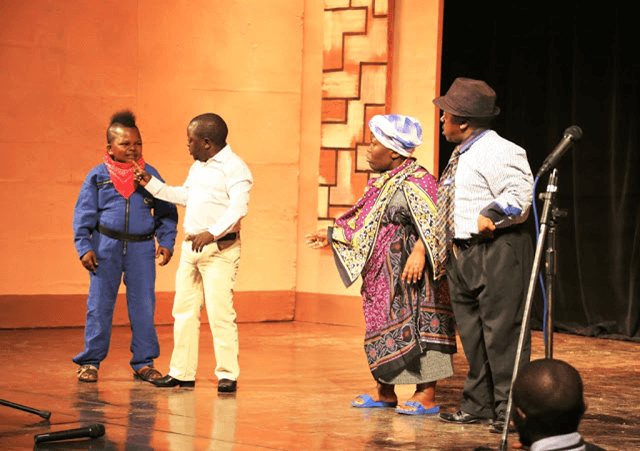Notes 1
HISTORY OF KISWAHILI LANGUAGE
Swahili language, also called kiSwahili, or Kiswahili,
Bantu language spoken either as a mother tongue or as a fluent second
language on the east coast of Africa in an area extending from Lamu Island, Kenya, in the north to the southern border
of Tanzania in the south. (The Bantu
languages form a subgroup of the Benue-Congo branch of the Niger-Congo
language family.)
People who speak Swahili as their sole mother tongue are usually
referred to as Waswahili, but this name refers to their language only and does
not denote any particular ethnic or tribal unit. Swahili is widely used as
a lingua franca in: (1) Tanzania, where it is the language of
administration and primary education; (2) Kenya, where it is, after English,
the main language for these purposes; (3) Congo (Kinshasa), where a form of
Swahili is one of the four languages of administration, the main language for
this purpose being French; and (4) Uganda, where the main language is
again English.
Swahili has been greatly influenced by Arabic; there are an
enormous number of Arabic loanwords in the language, including the word swahili, from
Arabic sawāḥilī (a plural adjectival form of an Arabic word
meaning “of the coast”). The language dates from the contacts of Arabian
traders with the inhabitants of the east coast of Africa over many centuries.
Under Arab influence, Swahili originated as a lingua franca used by several
closely related Bantu-speaking tribal groups. In the early 19th century, the
spread of Swahili inland received a great impetus from its being the
language of the Arab ivory and slave caravans, which penetrated as far north as
Uganda and as far west as Congo.
Swahili was later adopted by European
colonialists, especially the Germans, who used it extensively as the language
of administration in Tanganyika, thus laying the foundation for its
adoption as a national language of independent Tanzania. In Kenya and Uganda,
other local languages also received official encouragement during the colonial
period, but the tendency in these countries is now to emphasize the use of
Swahili. The oldest preserved Swahili literature, which dates from the
early 18th century, is written in the Arabic script, though the language is now
written in the Roman alphabet.
There are about 15 main Swahili dialects, as well as
several pidgin forms in use. The three most important dialects
are kiUnguja (or Kiunguja), spoken on Zanzibar and in the mainland
areas of Tanzania; kiMvita (or Kimvita), spoken in Mombasa and
other areas of Kenya; and kiAmu (or Kiamu), spoken on the island of Lamu
and adjoining parts of the coast. Standard Swahili is based on the
kiUnguja dialect.
Swahili is characteristically Bantu in its grammar, and it
has a large vocabulary of word roots traceable to a common Bantu stock. Swahili
nouns are divided into classes on the basis of their singular and plural
prefixes; prefixes are also used to bring verbs, adjectives, and demonstrative
and possessive forms into agreement with the subject of a sentence. Thus, in a
sentence with wa-tu, “people” (singular m-tu, “person”),
all the words begin with the w-/wa- prefix; e.g.,
wa-tu w-etu wa-le wa-kubwa wa-mekuja: “those big people of ours
have come.” Verb stems may be extended by means of varying suffixes, each one
with its particular nuance of meaning; e.g., funga (“shut”), fungwa (“be
shut”), fungika (“become shut”), fungia (“shut
for”), fungisha (“cause to shut”), and so on.
KISWAHILI DURING COLONIAL PERIOD
Various colonial powers that ruled on the coast of East Africa
played a role in the growth and spread of Swahili. With the arrival of the
Arabs in East Africa, they used Swahili as a language of trade as well as for
teaching Islam to the local Bantu peoples. This resulted in Swahili first
being written in the Arabic alphabet.
The later contact with the Portuguese resulted in the increase of
vocabulary of the Swahili language. The language was formalised in an
institutional level when the Germans took over after the Berlin
conference. After seeing there was already a widespread language, the Germans
formalised it as the official language to be used in schools. Thus schools in
Swahili are called Shule (from German Schule) in government, trade and the
court system. With the Germans controlling the major Swahili-speaking region in
East Africa, they changed the alphabet system from Arabic to Latin.
After the first World war, Britain took over German East Africa,
where they found Swahili rooted in most areas, not just the coastal regions.
The British decided to formalise it as the language to be used across the East
African region (although in British East Africa [Kenya and Uganda]
most areas used English and various Nilotic and other Bantu languages while Swahili
was mostly restricted to the coast). In June 1928, an inter-territorial
conference attended by representatives
of Kenya, Tanganyika, Uganda, and Zanzibar took place
in Mombasa. The Zanzibar dialect was chosen as standard Swahili for those
areas, and the standard orthography for Swahili was adopted.
HOW TO LEARN A LANGUAGE FAST – PART
1
The
first step in any successful language learning journey is setting clear and
achievable goals. Identifying your motivation for learning a new language is
crucial before setting any goals. Are you learning a language for travel, work,
or personal growth? Understanding your why will keep you motivated throughout
the process.
Once
you have your motivation, assess your current language skills. This will help
you determine your starting point and set realistic goals. For instance, if
you’re a beginner, your first goal might be to hold a basic conversation in the
target language. Specific goals give you a clear target to work towards, such
as aiming to understand a news article or converse fluently with a native
speaker.
Here
are ways or tips to learn a new language faster:
1. Learn one language at a time
As a polyglot who has taught himself to speak eight languages,
Richards always gets this question: “How can I learn more than one language at
the same time?” His advice? “Don’t do it. Let’s face it: learning one language
by itself is hard enough, right? And there’s a direct correlation between focus
and the amount you learn,” Richards explains. Adding a second language just
divides your time and attention. But focusing your attention on one
language means you’ll spend more time in that language, so you’ll learn it much
faster. That being said, if you really want to learn two languages at the same
time and you’re not as focused on speed, Richards says to go for it as long as
you understand that it will slow you down.
2. Conversation, Conversation, Conversation
If there’s a “secret” or “hack” to learning a foreign language,
it’s this: hours and hours of awkward and strenuous conversation with people
better than you in that language. (1) An hour of conversation (with
corrections and a dictionary for reference) is as good as five hours in a
classroom and 10 hours with a language course by yourself. There are a few
reasons for this. The first is motivation. (2) I don’t care how cool
your study guide is, you’re going to be far more invested and motivated to
communicate with a live person in front of you than a book or audio
program on your computer.




